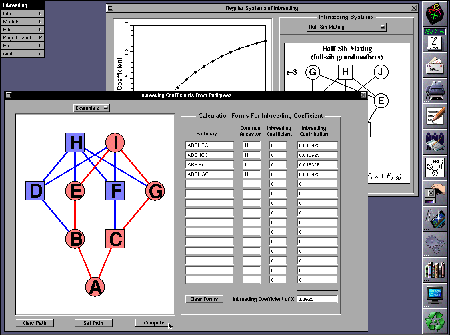

 Inbreeding
InbreedingInbreeding was created for an introductory college course in population genetics. One window of the application demonstrates how inbreeding coefficients are computed from pedigree data. Pedigree information can be read from an ASCII file and loaded into the program. The program will use this information to construct a pedigree diagram. Students can click on symbols in the diagram to trace out inbreeding pathways. The paths are placed into form cells for use in the calculation of the inbreeding coefficient. Another window of the application shows how the inbreeding coefficient changes under regular mating systems (e.g. selfing, brother-sister matings, parent-offspring matings, half-sib matings) and plots the inbreeding coefficient as a function of time. A screen image of a typical Inbreeding session appears below. Inbreeding was written by student programmer Roy Morita and Dr. Robert Desharnais.

Click to download full resolution image (65.9 KB.)
 Return to the Application Catalog
Return to the Application Catalog